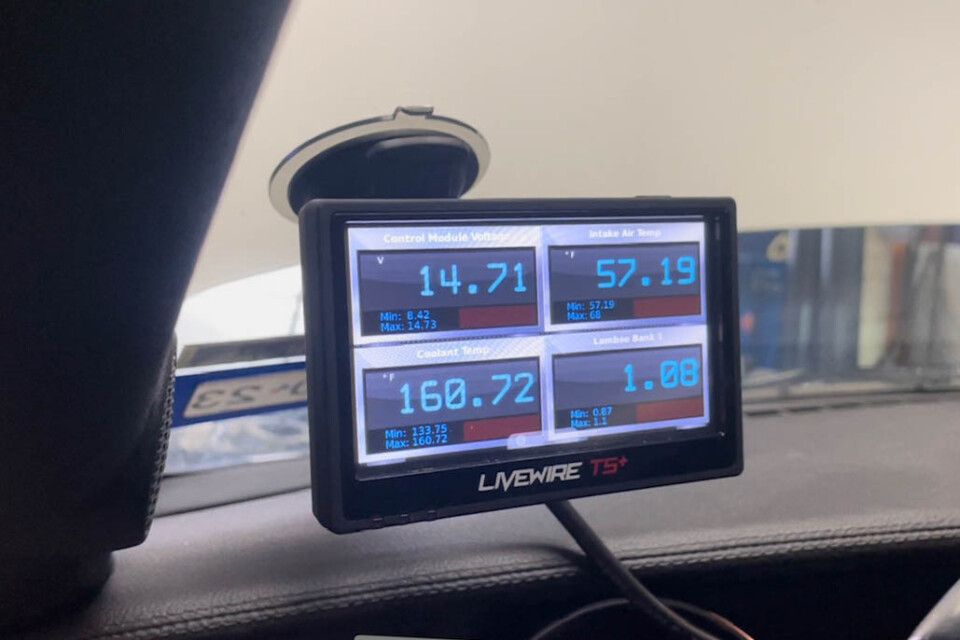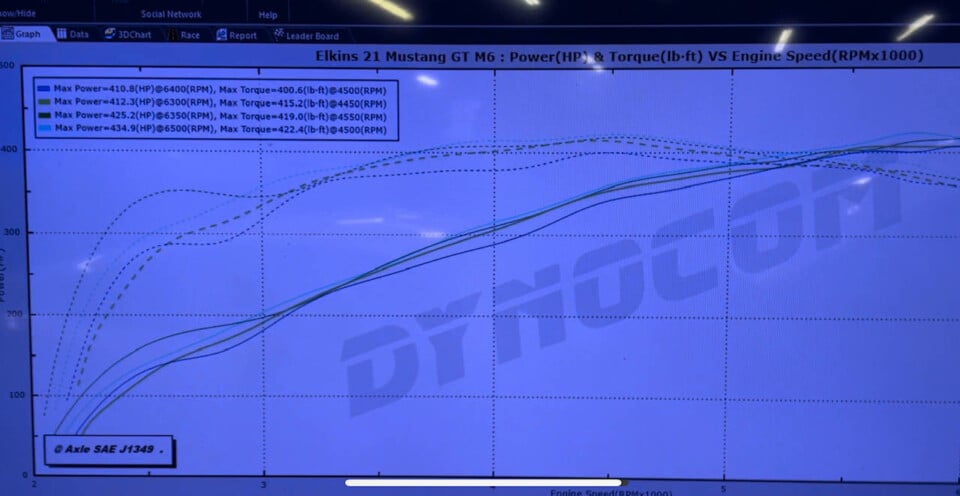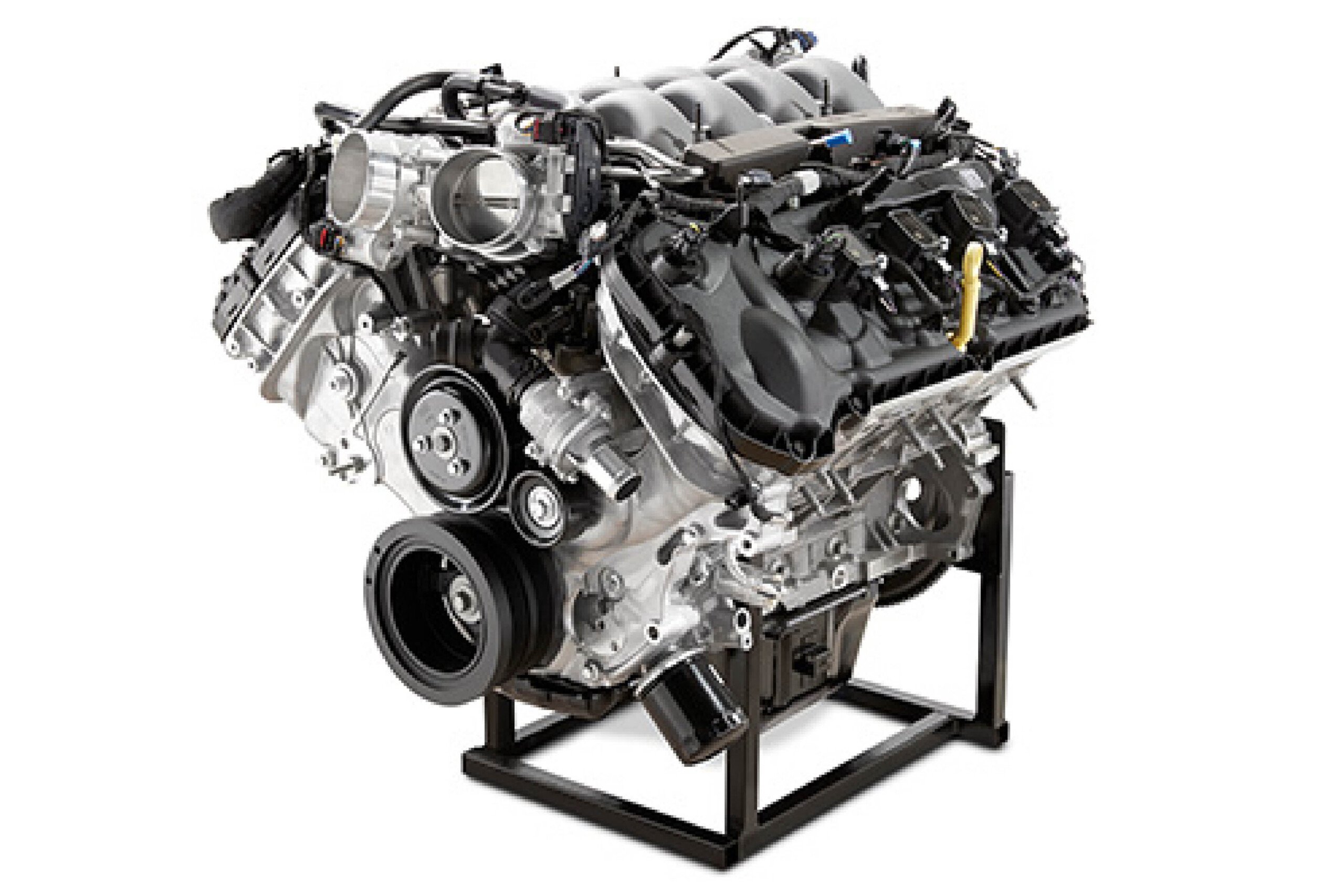There are plenty of products in the aftermarket realm that claim to free up or create more horsepower. While some of these use skewed data or are just plain false, I was eager to test out one of the most common such products: the cold air intake. I wanted to start with a vehicle that was modern, had low miles, and was completely stock, to prevent any variables in the results. One problem though: none of my personal vehicles fit the criteria. However, my father’s 2021 Mustang GT fit the bill, and better yet, Christmas was just around the corner.
In case you haven’t caught onto my gift giving theme for my father on holidays, it usually revolves around his Mustang. This works out well, as he enjoys products being thrown onto his pride and joy, and I enjoy driving the car around for the week. Albeit all things labor fall into my lap, and even after the work is done the duty of showcasing results to the public is once again mine. Needless to say, it’s a tiresome process, but one that I relish in knowing that my siblings are fighting a losing battle by gifting t-shirts and gift cards in neatly organized bags, versus me throwing horsepower and aesthetics at his S550.

Trying to remove as many variables as possible, we decided to use the Dynocom hub dyno of Aikman Performance. This would eliminate any variable frictional loss compared to other dynos.
The factory intake on the S550 Mustang isn’t visually obtrusive or as ungodly awful as earlier years of Mustang. This adventure wasn’t to clean up the engine bay, but rather, clean up the rumor mill of what a properly designed cold air intake could do with a tune. Since we were going after horsepower, I decided to utilize the tune-required Steeda Mustang GT ProFlow Open Cold Air Intake paired to a SCT Livewire TS+ Performance Programmer, using Steeda’s tune to see what kind of numbers the dyno would show.
Before we started throwing products into the engine bay and uploading CAI tunes, I wanted to see what horsepower, at the wheels, Ford had given purchasers of the pony car. Step two would be seeing what gains can be seen with a tune-only setup, before the final step of installing the Steeda cold air intake and uploading the cold air intake specific mapping.
Although it wasn’t mine, I still wanted to play with the SCT Livewire TS+ before handing it over to my father. I wanted to see just how much better the Livewire TS+ was compared to my much older X4. To say that I was jealous would be an understatement, as the Livewire TS+ boasts a 4-inch color touch screen offering a heads-up display of gauges, easier menu options, data logging, and even the ability to time performance events similar to the dragstrip. We won’t even go into the fact that you can tap into the programmer for a reverse camera. While my X4 has the same storage and upload capabilities, it is a far cry from the abilities seen on the Livewire TS+.

The 4-inch touch screen display of the SCT Livewire TS+ allows us to thumb through displays, upload new tunes, and see critical data easily.
Christmas came early for my father with Aiken Performance in Cedar Park, Texas, opening an after-hours time slot for the Mustang to be mounted on its hub dyno. While the thought of being king of the horsepower chart was quickly diminished upon arriving at a shop full of racecars sporting parachutes on their backside, It was still exciting to be at a shop that puts performance first. As the owner and man behind the computer, Jerry Aikman, and I spoke, he was quickly uploading the files that Steeda had emailed me onto the programmer.
After allowing the engine to warm up and get the oil temperatures within spec, which Ford logs as “normal” in its gauge display options, we were ready to make a few pulls. As the engine speed increased and the dyno hubs began to rotate at a rapid rate, my ears rejoiced as the Coyote engine, even in stock form, began to open up. After around 10 seconds the throttle pedal was lifted off of and the squeal of the hub dyno winded down. The factory stock Mustang with the manual transmission had mustered up a respectable 410.8 horsepower. The second pull produced the same horsepower figure.
It was time to start eliciting more horsepower from the pony car, and we decided to start with a Steeda tune devised to enhance the stock Coyote engine. Since most bolt-ons that provide the biggest gains in horsepower require a programmer regardless, it was a natural step to see what this linchpin to higher horsepower could provide solo. The Steeda tune for a bone-stock Coyote Mustang netted a gain of 15 horsepower, showing 425 horsepower after the second pull on the dyno.
While the tune-only gains were impressive and showed what Ford had left on the table, I was excited to see what the Steeda intake in conjunction with the final Steeda CAI mapping could prove. Thankfully, Aikman Performance was also interested, and we went to work installing the Steeda Mustang GT ProFlow Open Cold Air Intake.

The Steeda ProFlow Closed Cold Air Intake claims to reduce intake air temperatures, increase horsepower at all RPM, and reduce heat soak compared to the stock unit.
The factory air intake system, while cumbersome, was easy to remove using simple hand tools. Once removed, the engine bay showed a large area to install the new Steeda intake with the help of the instructions. Now was the time to see if we could mirror Steeda’s horsepower claims with an intake and tune.
We once again let the oil temperature get up to normal and proceeded to make two more pulls. The computer monitor switched from gauge display to the dyno graph and another 10 horsepower was found. The extremely conservative tune from the wizards at Steeda along with the Steeda cold air intake revealed a final number of 434.9 horsepower at the wheels. That’s not bad for a simple tune and intake, but furthermore, checked off the first few boxes of any bolt-on build.

We gained 24.1 horsepower and 21.8 lb-ft of torque with a cold air intake and tune. However, where the products really shined was on the open road.
The final numbers proved to be even more impressive when showing how conservative the tune was. Had we leaned out the tune a little, we could have probably squeezed another 6 horsepower out of the engine, but I’ll take safe over sorry any day, and since this car is meant for street driving, I was happy to see the numbers increasing. Now that the dyno portion was done, it was time to enjoy the car on the backroads of the Texas Hill Country.
While numbers are great for bench racing buddies, the cold air intake and tune added a visceral driving experience throughout the mid-range and top end powerband. Although I had restrained myself to spirited driving mode only, the changes were apparent, and they were for the better. The engine sounded stronger and the go-pedal brought on quicker acceleration, too. All said and done, this is a modification I don’t regret doing for my father. All that’s left is for him to bravely jump in the passenger seat as my mom once again takes the wheel.



